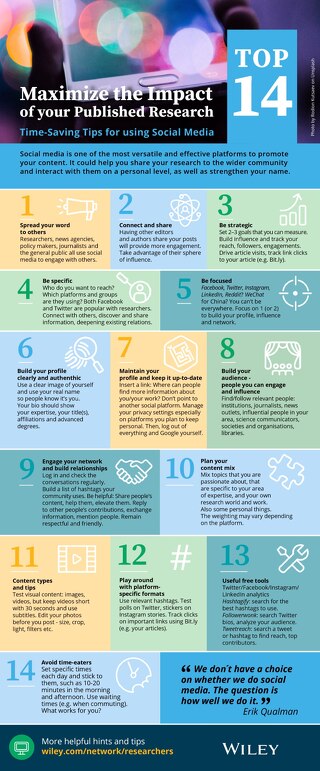6-tips-for-researchers-for-engaging-with-the-media
June 27, 2019
As researchers, communicating our work is vital, but approaching the media can be daunting in a crowded arena, particularly when you’re in the early days of a scientific career.
We can’t all become media darlings and the go-to face of science overnight, but these tips can help you get you started and bring your research to the world beyond the conference hall. Gathered from a panel of journalists at a Voice of Young Science: Standing Up for Science workshop hosted by Sense about Science, this advice has changed how I look at engaging with the media.
1. Don’t Be Afraid of the Media
We all want our research to be presented accurately—and so does any reputable media outlet.
Anxiety can come with sharing your work with the media from a fear of misrepresentation. In reality, few journalists want to misrepresent your story and the best way to make sure they get an accurate view is to be the one discussing it with them! It can be an anxious experience, but have faith in journalists to get your work out there.
2. Make the First Move
Journalists can only talk about what they know exists. Making a personal connection with a journalist gives you an avenue to talk about your work and gives them an expert to go to in the future.
At any given time a journalist may have fifty stories to chase down already, so they are unlikely to seek you out even if your work has a big scientific impact. Instead, take your work to them.
Not only will this do them a favor by providing one less story chase down, but it also enables you to become a useful contact. Most media organizations seek out regular commentators to talk to when a story lands, and that isn’t necessarily based on their research impact!
3. Don’t Just Rely on Email
Email fatigue isn’t exclusive to scientists and many press releases sit unread in a journalist’s inbox. Whether it’s via Twitter or a phone call, find ways to get in touch that make you stand out from the noise.
I’m sure we’re all equally guilty of barely reading very official looking emails before moving on to the next thing. Particularly for bigger media outlets, the sheer volume of press releases and emails makes it easy for you to be overlooked.
It may feel old-fashioned, but if you can track down a phone number, calling is a far more effective means of approaching a new contact.
4. Ask your press officers
Use the expertise around you. Whether university, institutional, or departmental, press officers can help at every stage of a media journey!
Whether you want help working out what your research story is, finding contacts in the media, or advice on how to engage with the press, don’t be afraid to contact press officers at your institution. Universities aim to increase their profile, so if your story could be significant news, they will be happy to help! They might send out a press release or help you pitch an article to an online platform like “The Conversation.” Reach out to them early so they can add your work to their plans.
5. Think about the story
Your research may be compelling to those in your field, but it’s vital the public can understand and connect with your work.
Fundamentally any relationship with the media is a proxy for relating to the public. Journalists will want any story featuring your work to be successful, just as much as you do. A sure-fire way to make an impact is to make sure it has meaning for the wider non-expert public. It’s not always easy linking your work to everyday practicalities, but if it’s relatable, there’s a higher chance that it will be noticed as newsworthy from the start!. This is one reason to consider the scope of your story early on. It can be incredibly helpful to find ways of climbing out of your niche to examine wider areas of your research impacts. Find a way to relate your work to everyday life and it will be much easier to find a home for the story.
6. Consider your outlet
Instinctively we gravitate to big news outlets to get the word out far and wide. In practice, you can often achieve much better reach by using local media outlets and non-digital media such as radio.
When it comes to the media, it’s natural to want to go for the most possible views we can—but in many respects, it can be much more effective to go for quality over quantity. Though their readership may be smaller than online media outlets, local newspapers still hold the trust of their readers and will have more time spent reading than a quick click-through online.
Similarly, local radio stations remain a huge part of the news landscape and will be able to dedicate much more time to your work than competing at a national stage. Taking a local angle has an added benefit that those engaging with you can more directly follow your work, and build further impact as you go forward.
These pointers don’t guarantee success. Much like paper submissions or grant applications, expect to get as many rejections as victories. Heading into the world of mainstream media means competing with stories from all walks of life. But follow the ideas above, and with a bit of luck your research will make its way into the public eye.














